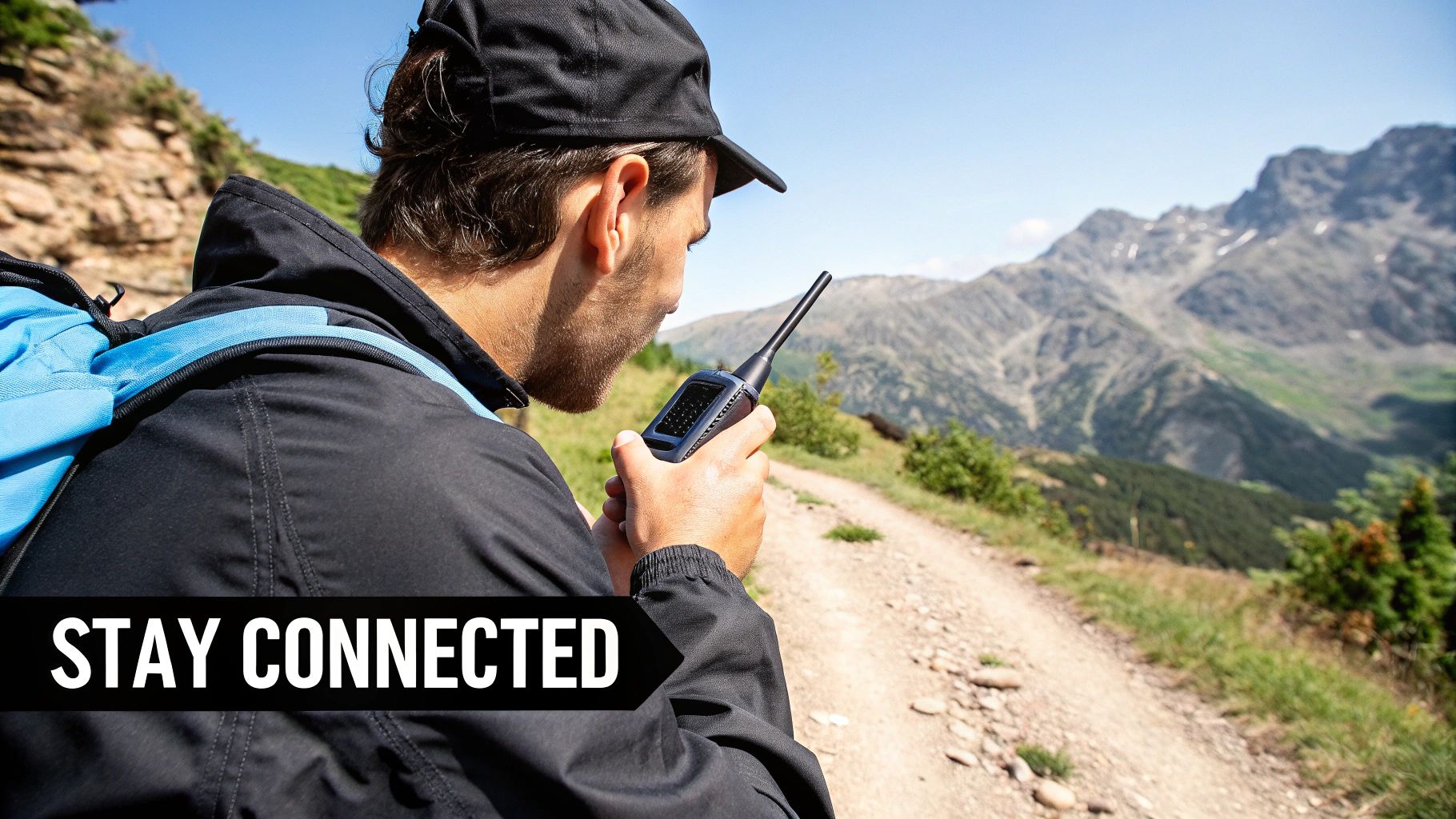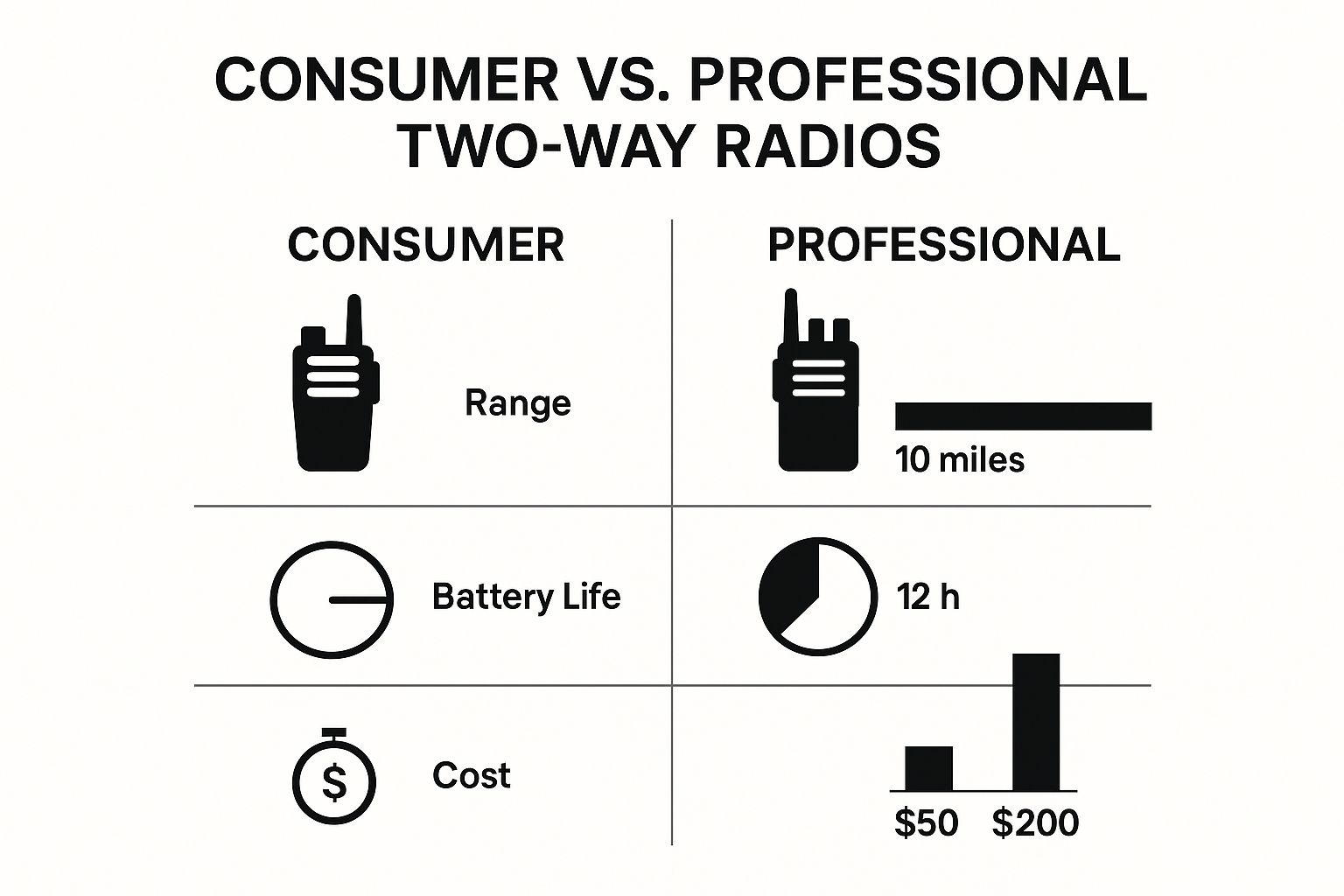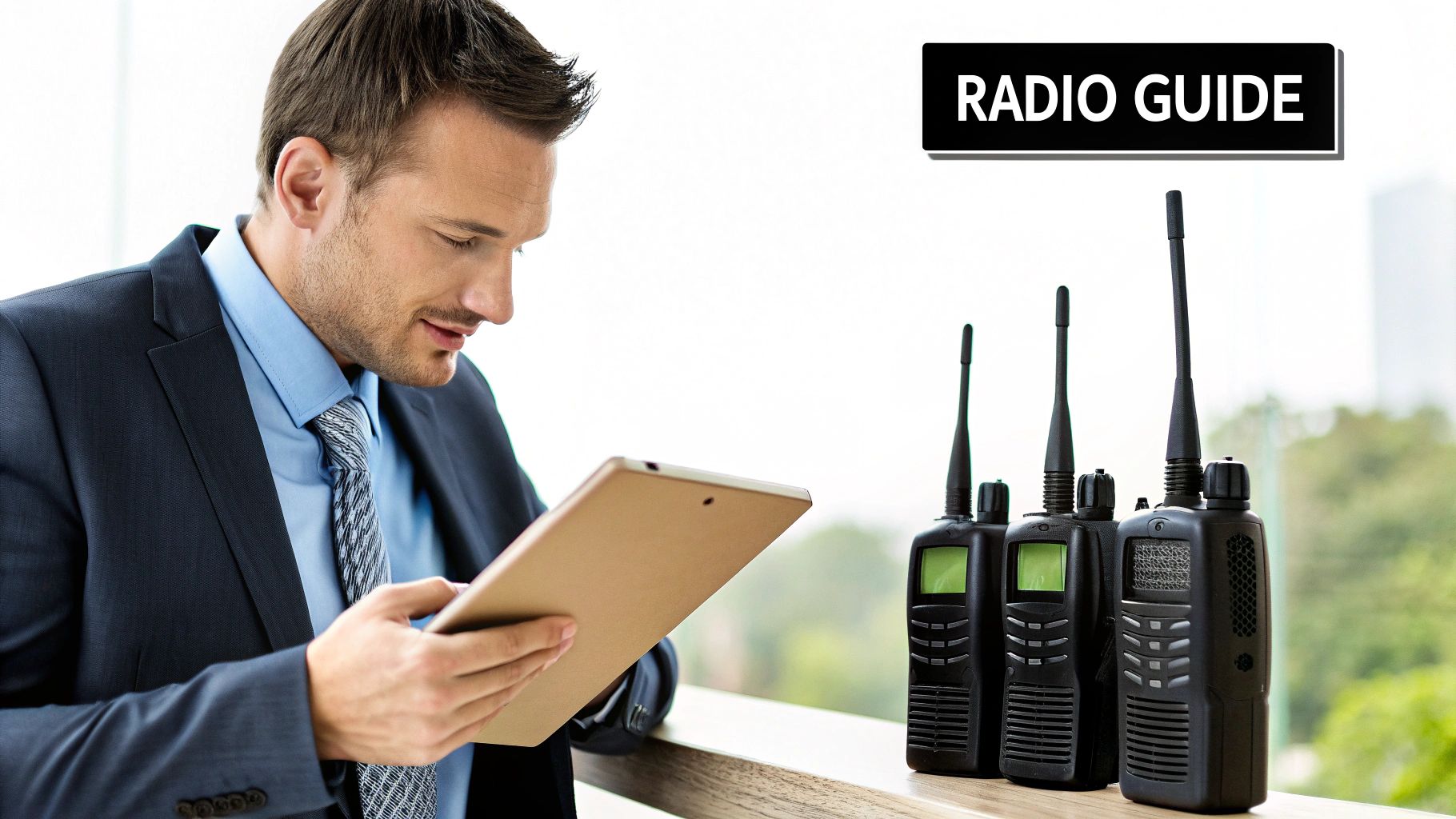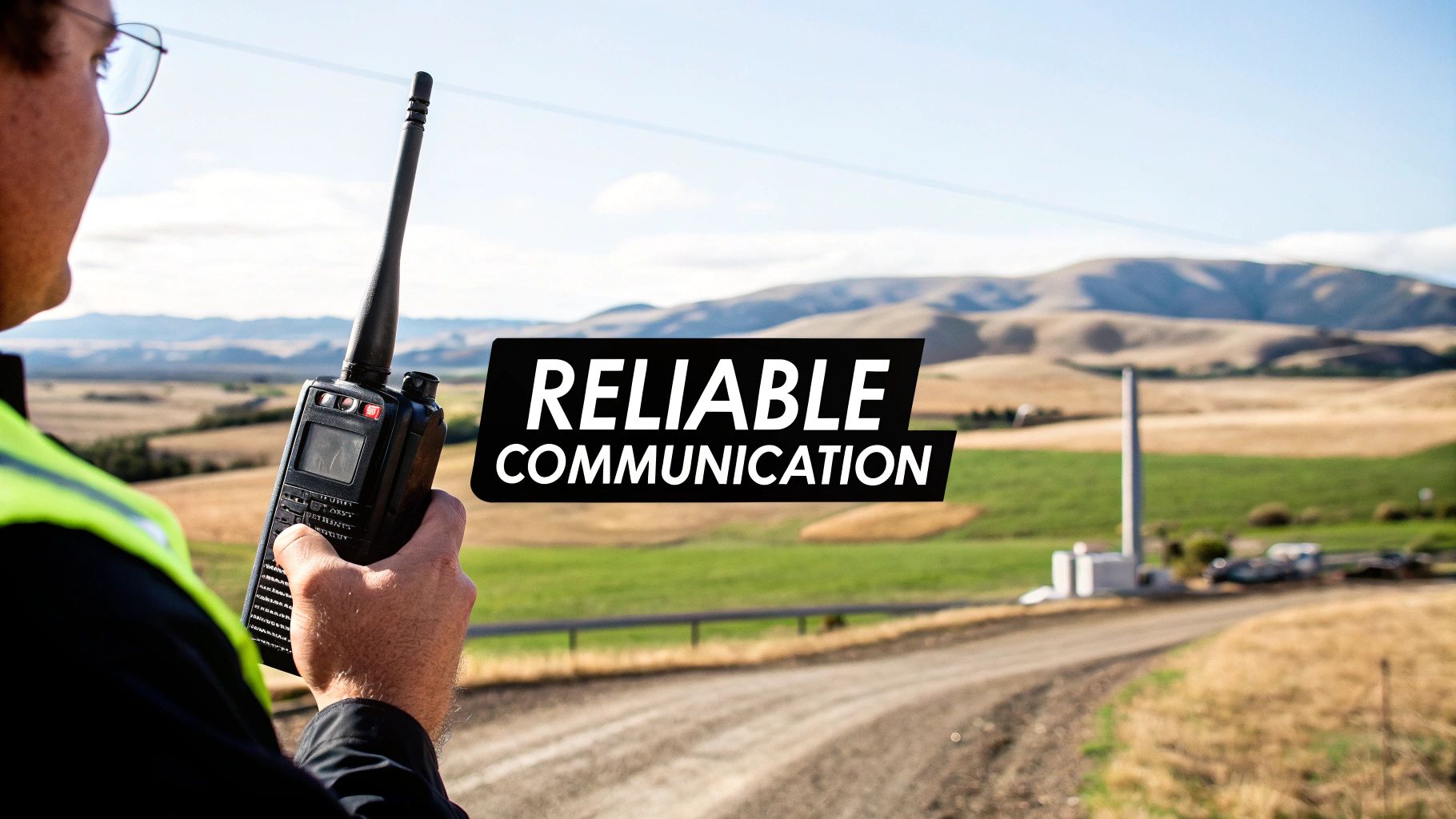Why Two Way Radio is Still the Unbeatable Choice for Modern Communication
In a world buzzing with smartphones and constant cellular connectivity, it’s easy to view the classic two way radio as a relic of the past. However, this enduring technology has not only stood the test of time but continues to be the backbone of reliable communication in New Zealand and across the globe. Its core strengths—simplicity, robustness, and independence from fragile public networks—are precisely why it remains an indispensable tool for countless industries.
Alternative technologies have certainly threatened the dominance of two-way radio over the years, especially in critical sectors like emergency services. Yet, none have managed to replicate the sheer robustness, instant group communication, and incredible lifetime value that a professional radio system delivers. It just works, especially when everything else fails.
The Enduring Features and Benefits of Radio Technology

The reason two-way radio remains so relevant is simple: it solves fundamental communication challenges that other technologies can't. In New Zealand, with its rugged terrain and often-unpredictable conditions, the ability to communicate instantly without relying on a cell tower is not a luxury—it's a critical component of health and safety.
From remote farming operations and forestry crews to marine vessels navigating coastal waters, a direct link via VHF or UHF radio frequencies provides a lifeline. For a deeper understanding of the principles, you can explore the fundamentals of radio communication basics. This operational independence is the primary reason why professional organisations continue to invest in quality radio networks.
Convergence: The Best of All Worlds
It’s also crucial to recognise that modern communication is not an "either/or" scenario. There has been a powerful convergence of technologies. Today's advanced communication devices are not just radios; they are intelligent hubs that can choose the most appropriate communication bearer at any given moment.
A single device can seamlessly switch between a private DMR radio network, a public cellular network, and even satellite, incorporating the features and benefits of multiple technologies. This hybrid approach ensures the message always gets through, leveraging the instant, rugged reliability of radio as its core foundation.
A Powerful Endorsement from the NZ Government
Perhaps the most significant proof of two-way radio's enduring value comes from the New Zealand government itself. After many years of deliberation and assessing global alternatives, the government has unequivocally backed two-way radio as the core communications technology for the nation's emergency services for the foreseeable future.
This strategic decision, currently being rolled out, is a massive vote of confidence. It confirms that when lives are on the line and every second counts, the proven performance and resilience of a dedicated radio network is the only acceptable standard.
This commitment will have far-reaching effects, influencing the technology choices of other government and semi-government organisations that need to interoperate seamlessly during crises, including:
- Local and regional councils
- Civil Defence
- Search and Rescue (SAR) teams
- Volunteer emergency services
This nationwide upgrade doesn't signal the end for radio; it cements its central role in a sophisticated, future-proof communication ecosystem for decades to come.
The Unmatched Durability and Lifetime Value of Radio
In tough New Zealand work environments, communication tools aren't just handy gadgets; they're essential for getting the job done and, most importantly, for health and safety. While smartphones have their place, they just don't cut it when faced with the realities of a construction site, a remote forestry block, or the rough conditions out at sea.
This is where the sheer physical resilience of a professional two way radio really comes into its own.
Over the years, other technologies have tried to muscle in on radio's territory, especially in the emergency services. But so far, nothing has managed to deliver the same one-two punch of ruggedness and long-term value. A well-built radio isn't a disposable item; it's an investment in communication that just keeps working.
Built for the Toughest Conditions
Professional-grade radios from brands like Motorola, Tait, and Entel are engineered to a completely different standard. Many are built to meet strict military specifications for durability and carry an IP67 rating. This isn't just marketing fluff; it's a certification that the device is totally dust-tight and can handle being submerged in a metre of water for up to 30 minutes.
That makes them an ideal waterproof solution for any marine or boating application.
Imagine a device you can drop onto concrete, cake in mud on a 4WD track, or get soaked in a downpour and still hear every word crystal-clear. That’s the baseline expectation for a professional handheld radio. For key NZ industries, this kind of toughness is non-negotiable:
- Construction: Radios have to survive constant dust, vibrations, and hard knocks.
- Forestry: Teams operate in damp, remote areas, miles from the nearest repair shop.
- Maritime: The gear must withstand constant exposure to corrosive saltwater spray.
At its core, a professional two way radio is designed with one thing in mind: reliability. The whole idea is that when you push that talk button, it has to work—every single time, no excuses, no matter what’s going on around you. That simple promise is what truly sets it apart from a fragile consumer phone.
Calculating the True Lifetime Value
Beyond just being tough, a two way radio network delivers incredible lifetime value. Sure, the upfront cost might be more than buying a few smartphones, but the long-term cost of ownership is much lower and far more predictable. There are no monthly data plans for direct radio-to-radio comms, no delicate screens to replace every other week, and no software updates designed to make your gear obsolete.
A well-maintained radio fleet can easily provide reliable service for a decade or more, making it a genuinely cost-effective asset.
And modern technology has only made the deal sweeter. The shift from analogue to digital communication, particularly with DMR (Digital Mobile Radio), has been a massive leap forward. DMR technology not only makes the audio clearer by filtering out background noise, but it can also extend the life of a lithium battery by up to 40% compared to older analogue radios.
That means your teams stay connected for longer shifts without hunting for a battery charger, which directly boosts productivity.
When you add it all up—the rugged build, predictable costs, and smart tech like DMR—it’s obvious why a quality radio system is a strategic investment for any organisation that simply can't afford communication failures.
Comparing Two Way Radio with Alternative Communication
To really understand the unique advantages of two-way radios, it helps to see how they stack up against other common communication tools in professional and emergency settings. Each has its place, but for mission-critical reliability, radios often come out on top.
| Feature | Two Way Radio (UHF/VHF) | Cellular Phones | Satellite Communicators |
|---|---|---|---|
| Infrastructure Reliance | Independent of public networks; relies on direct line-of-sight or local repeaters. | Dependent on public cellular towers and network coverage. | Dependent on a network of orbiting satellites. |
| Instant Communication | Yes (Push-to-Talk). Instant one-to-many group communication is standard. | No. Requires dialling, ringing, and answering. Group calls can be complex. | Limited. Often text-based with some delay; voice calls can be slow to connect. |
| Cost Structure | High initial hardware cost, but no ongoing monthly subscription fees for direct use. | Lower hardware cost, but requires ongoing monthly data and voice plans per user. | High hardware cost and expensive subscription plans. |
| Durability | Extremely high. Often built to military specs (MIL-STD) and high IP ratings (e.g., IP67). | Low to moderate. Fragile screens and not typically designed for harsh industrial use. | High. Designed for remote, rugged outdoor use but can still be sensitive. |
| Performance in Disasters | Highly reliable. Works even when cellular networks are down or overloaded. | Unreliable. Networks often fail or become congested during emergencies. | Highly reliable, as it bypasses terrestrial networks. The go-to for remote emergencies. |
| Coverage Area | Limited by transmitter power and terrain, but extendable with repeaters. | Extensive in populated areas but non-existent in remote or rural locations. | Global coverage, including oceans and polar regions, but can be blocked by terrain/buildings. |
Ultimately, while cellular and satellite devices are powerful tools, they can't replace the dedicated, instant, and resilient communication offered by a professional two-way radio system in demanding operational environments. It’s about choosing the right tool for the job.
Why the NZ Government Trusts Two-Way Radio
When communication absolutely cannot fail, the ultimate vote of confidence comes from the very people who protect our communities. In New Zealand, the government spent years carefully weighing its options for frontline emergency services. After all that deliberation, the choice was clear.
This decision is a powerful testament to the unmatched reliability and enduring relevance of two-way radio. It’s a clear signal: when lives are on the line, the proven, battle-tested performance of radio is the only standard that matters.
The Public Safety Network: A Landmark Decision
Right now, the NZ government is rolling out the Public Safety Network (PSN), a massive investment in a brand-new, cutting-edge digital radio network. This system is set to become the communication backbone for Police, Fire and Emergency NZ, and ambulance services for years to come.
This wasn't a decision made on a whim. It came after watching cellular-based systems in other countries buckle under the pressure of large-scale emergencies, often becoming overloaded or failing completely. For New Zealand's unique geography and seismic risks, a dedicated and resilient radio network was deemed essential.
This commitment to a dedicated radio network highlights a fundamental truth: mission-critical communication demands a level of control, security, and resilience that public cellular networks simply can't guarantee.
The PSN is being built from the ground up to withstand worst-case scenarios. It’s about ensuring first responders can always stay connected, coordinate their efforts, and call for backup without a second thought.
Setting the Standard for Everyone
The impact of this nationwide radio network goes far beyond the primary emergency services. It's setting a new benchmark for communication that will ripple out to a whole range of other critical organisations.
Think about it: during a major civil defence event or a complex search and rescue operation, all agencies must be on the same page. This government-led initiative paves the way for standardisation, pushing other key players to align their systems for seamless teamwork.
This directly affects groups who work hand-in-hand with frontline services, including:
- Local Councils: For coordinating public works and emergency responses.
- Civil Defence: To manage regional incidents and evacuations.
- Search and Rescue (SAR) Teams: For reliable comms in remote, rugged terrain.
- Government Agencies: Like the Department of Conservation and Ministry for Primary Industries.
This unified approach means that during a crisis, a Motorola radio used by a police officer can talk flawlessly with a Tait portable in the hands of a council worker or a SAR volunteer. That level of coordination is the lifeblood of effective emergency management.
A Hybrid Future with Radio at its Core
It’s important to understand this isn’t about dismissing other technologies. Far from it. Instead, it positions two-way radio as the rock-solid foundation of a modern, hybrid communication strategy.
Today’s communication devices are getting smarter. A single handheld can now intelligently switch between a private DMR radio network, a public cellular network, and even Wi-Fi, automatically picking the best tool for the job.
This convergence gives users the best of both worlds: the instant, reliable push-to-talk simplicity of radio, backed by the wide coverage of cellular when it's available. But the rugged, life-saving core of radio is always there as the ultimate fallback. The government’s investment cements the central role of radio in New Zealand's safety for decades.
To learn more about this critical piece of infrastructure, you can find detailed information on the New Zealand Public Safety Network and what it means for the country.
The Evolution of Modern Hybrid Radio Devices
If you think a two way radio is a clunky, old-school piece of gear, it’s time to think again. While the core mission—direct, reliable communication—hasn’t changed, today’s devices are in the middle of a massive transformation. We’re now seeing an incredible convergence of technologies, creating hybrid communication hubs that are far more capable than anything that came before them.
The driving force behind this evolution is a simple one: making sure the message always gets through, no matter what. Modern radios aren’t just tethered to a single radio network anymore. They’re being built to be smarter and more adaptable, creating a truly seamless experience for the user on the ground.
The Power of Multi-Network Intelligence
Leading this charge are hybrid devices that can intelligently and automatically jump between different communication networks. These aren’t just radios; they’re sophisticated tools engineered to pick the best network for the job at any given moment.
Picture a truck travelling from a remote forestry site back to an urban depot. A hybrid radio handles this journey without breaking a sweat:
- In Remote Areas: It stays on a private DMR (Digital Mobile Radio) network. This provides the clear, secure, and instant push-to-talk comms needed when there’s no other signal for miles.
- Approaching a Town: As the truck gets into an area with solid cellular networks, the device flips over to 4G or 5G automatically. This opens up its range and allows for data-heavy applications, all without losing that essential push-to-talk capability.
- At the Depot: Once it pulls into a yard with Wi-Fi, the radio connects to the local network. This means crystal-clear calls and fast data transfers without chewing through cellular data or tying up radio channels.
This smart switching all happens in the background, keeping the user connected without them ever having to touch a thing. It’s the best of all worlds: the rugged, instant group calling of radio, combined with the massive coverage of modern cellular and data networks.
More Than Just a Voice Device
This merging of technologies has turned the modern handheld or vehicle-mounted radio into a genuine all-in-one tool for productivity and safety. With different networks integrated, these devices are now packed with features that go way beyond simple voice calls.
A modern hybrid radio is no longer just for talking. It has become a central hub for a mobile workforce, integrating voice, data, and location services into a single, rugged device that is built to last.
This integration delivers a suite of powerful capabilities to teams right across New Zealand. Integrated GPS tracking means a dispatcher can see every team member’s location on a map in real-time, which is a game-changer for improving coordination and worker safety.
On top of that, these devices now support text messaging for quiet communication and can even handle workflows like job ticketing and status updates. Some of the more advanced models from brands like Motorola, Hytera and Tait are even bringing video streaming into the mix. A worker on-site can now share a live feed of a problem with an expert back at the office, turning a simple two way radio into a powerful tool for real-time collaboration. It’s a perfect fit for vehicle fleets, industrial sites, and any mobile team that needs to stay connected and efficient.
Choosing the Right Radio Solution in New Zealand
Picking the right two way radio system isn’t just about buying a piece of hardware; it’s a decision that has a real impact on your team’s efficiency, productivity, and, most importantly, their health and safety. While it may seem convenient, purchasing from large department stores is often a mistake, as they typically carry a very limited range and lack the specialist product knowledge required to design a truly effective system.
That’s where a specialised supplier comes in. You’re not just buying a radio; you’re getting expert system design, deep product knowledge, and the ongoing support that keeps your team connected. To make the right call, you first need to get your head around the core technologies. This way, you’ll end up with a setup that works flawlessly, whether you’re coordinating a crew on a construction site, managing logistics on the farm, or heading into the back country.
Understanding Key Radio Frequencies
In New Zealand, your main choice comes down to two frequency bands: VHF (Very High Frequency) and UHF (Ultra High Frequency). They are definitely not interchangeable, and picking the right one for your specific environment is the first step to getting clear, reliable comms.
- VHF Frequencies: Think of VHF as the long-distance runner. Its longer radio waves are brilliant at travelling over wide-open country with minimal obstructions. This makes it the go-to choice for farming, forestry, and any marine or boating applications where you need to cover a lot of ground.
- UHF Frequencies: UHF is the specialist for navigating obstacles. Its shorter wavelengths are much better at punching through solid objects like concrete, steel, and even dense bush. If you're working in or around buildings, in a city, or on a cluttered industrial site, UHF is the clear winner.
To make it even clearer, here’s a quick rundown of how they stack up for common Kiwi scenarios.
Quick Guide to UHF vs VHF Radio in NZ
This table summarises the key characteristics and best-use scenarios for UHF and VHF radio frequencies in New Zealand, helping you decide which is better suited for your operational needs.
| Characteristic | UHF (Ultra High Frequency) | VHF (Very High Frequency) |
|---|---|---|
| Best For | Built-up areas, indoors, complex industrial sites | Open country, farmland, marine, long distances with clear line-of-sight |
| Signal Penetration | Excellent at penetrating concrete, steel, and dense foliage | Poor at penetrating buildings and dense obstructions |
| Wavelength | Shorter | Longer |
| Typical Range | Shorter range but more reliable in cluttered environments | Longer range in open terrain |
| Common NZ Uses | Construction, manufacturing, security, hospitality, urban businesses | Farming, forestry, marine/boating, outdoor recreation |
| Licensing | General User Radio Service (GURS) channels available, but private licensed channels are common for business | Both GURS and private licensed options available |
Ultimately, the choice between UHF and VHF depends entirely on where you'll be using your radios most.
Analogue vs Digital (DMR) Technology
The next big decision is whether to stick with traditional analogue or move to modern digital radio. Analogue has been the trusty workhorse for decades, and it still has its place. But for most professional teams today, Digital Mobile Radio (DMR) offers some massive advantages.
Digital radios work by turning your voice into data before transmitting it. The result? Crystal-clear audio, because the technology is smart enough to filter out all the background clatter. Digital also brings serious security benefits with encryption options, allows for private one-to-one calling, and can even stretch your battery life by up to 40%.
Better yet, most modern digital radios from top brands like Motorola, GME, and Entel are dual-mode. This means they can still talk to your old analogue units, letting you upgrade your fleet in stages without leaving anyone out of the loop. To see what’s out there, have a look through the different professional radios for sale in NZ and check out the features for yourself.
The image below gives you a good idea of the gap between a basic consumer radio and a professional-grade unit.

As you can see, professional gear is built for the real world. It delivers a serious boost in performance with much greater range and battery life that won't let you down halfway through a shift, making it a far more dependable tool for any serious operation.
At the end of the day, the best way to get a system that’s right for you is to talk to a specialist. They can properly assess your work environment, recommend the correct frequencies, sort out any licensing, and make sure your investment provides rock-solid communication for years to come.
Common Questions About Two Way Radios

Stepping into the world of professional communication always brings up a few questions, especially when you’re looking to invest in a reliable two way radio system. To help you make a confident decision, we've answered some of the most common queries we hear from our customers right here in New Zealand.
Do I Need a Licence to Use a Two Way Radio in NZ?
That’s one of the first things people ask, and the answer is: it depends on the radio.
Here in New Zealand, radios that run on the General User Radio Service (GURS) bands don't require an individual licence. This covers certain UHF CB and PRS radio frequencies, making them a great plug-and-play option for the general public.
However, if your business needs private, secure channels with more power, you'll need a licence from Radio Spectrum Management (RSM). This is where talking to a specialist supplier really pays off. We can handle the compliance side of things, ensuring your system is perfectly optimised for your needs without any of the guesswork.
What Is the Real-World Range of a Handheld Radio?
On paper, a radio's range looks simple, but in the real world, it's all about the environment. A radio's power is one thing, but what’s standing between you and the person you're talking to is what really matters.
In a wide-open, flat area with a clear line of sight, a standard 5-watt portable radio can easily communicate over several kilometres. But start adding obstacles, and that range shrinks. In a city, buildings get in the way. Out in the country, dense bush and hilly terrain will do the same thing.
This is where a modern digital radio really shines. An old analogue radio gets fuzzy and filled with static as you reach the edge of its range, but a digital one often keeps the audio crystal clear right up until the signal drops completely. If you need to cover serious distances, a vehicle-mounted radio or a repeater system is the way to go.
Are Modern Digital Radios Compatible with Older Analogue Ones?
Yes, absolutely. This is a huge relief for businesses wanting to upgrade without having to replace their entire fleet of radios in one expensive hit.
Many of the latest digital two way radio models, especially from trusted brands like Motorola and Tait, come with a 'dual-mode' or 'mixed-mode' feature.
This clever function lets the radio operate on both new digital (DMR) channels and your traditional analogue ones. It's the perfect solution for a gradual upgrade. Your team can keep communicating seamlessly between the old and new radios using the analogue channels, while you start taking advantage of the advanced digital features on separate, secure channels. You get the best of new technology without disrupting a thing.
At Mobile Systems Limited, we provide expert advice and tailored communication solutions to keep your team connected, safe, and productive. Explore our range of professional radio equipment and services at https://mobilesystems.nz.


